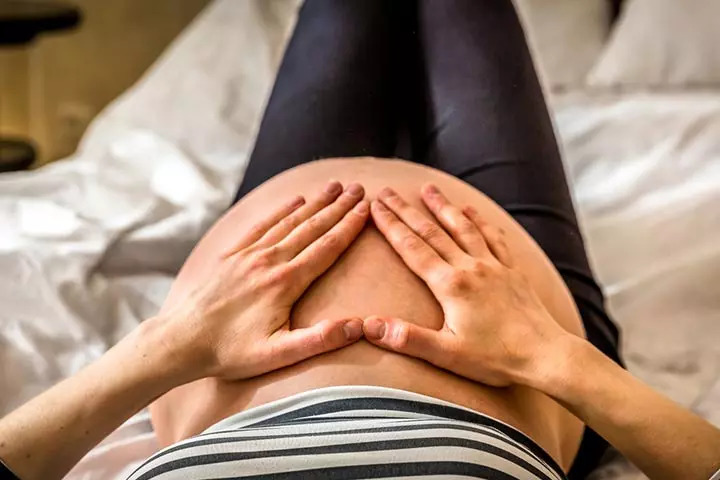
Image: Shutterstock
Nothing can beat the feeling of experiencing your baby kick, especially if this is your first time being pregnant. It’s usually recommended to keep track of your baby’s movements during the last few months of your pregnancy to make sure that the baby is doing well. Baby’s movements are something that has always sparked curiosity both among the doctors and moms-to-be. But this one study has shed more light regarding the baby’s movements in the womb and the results are pretty amazing.
For the study, MRI scanning was done to take a look at the fetuses’ kicks. It was published in the Journal of the Royal Society Interface in 2018. The study gave scientists a better understanding of how hard the babies kick in the uterus and how it benefits their health. Specialized computers were used to evaluate the force of the babies’ kicks and the impact it has on the fetuses’ bones (1).
It was found that the kicks grew stronger with time, which in turn helped the babies to develop stronger bones. At 20 weeks of pregnancy, researchers found that the babies’ kicks grew stronger with a force of about 6.5 pounds. This number peaked up to 10.5 pounds by week 30. However, the force of the babies’ kicks dropped to 3.8 pounds by week 35. This drop in the number is attributed to the baby running out of space in the mother’s uterus with their growing body.
It’s no wonder that babies kick in the womb. After all, they have enough room to swim around. And making a few swishes and turns are considered to be normal signs that they are healthy and active. But as it turns out, kicking in the womb has several other benefits. Interestingly it was found that the pressure felt by the baby’s skeleton during kicking is what helps them build stronger bones and joints. And in the later part of the pregnancy, as the force of the kick increases and the space inside the womb reduces, the baby’s skeleton experiences more pressure which contributes to their healthy development closer to the due date.
Doctors recommend pregnant women to keep a check on the fetal movement throughout their gestational period. The study also revealed that the changes in the fetal movement pattern towards the end of the pregnancy are associated with musculoskeletal malformations and poor fetal outcomes.
How To Keep Track Of Your Baby’s Kicks
Mothers-to-be usually feel their baby’s first kick anywhere between 18-25 weeks of being pregnant. Women who have previously given birth may experience it early around 18th week into the pregnancy and for first-time mums, it may be closer to their 25th week (2).
It can be hard to figure out your baby’s kicks for the first time. Don’t worry, you will soon be able to figure it out once you notice a pattern. Be attentive to your baby’s movements and find out at what time during the day they are most active. This can help you to keep track of your baby’s movements by counting the number of kicks or rolls which in turn helps in identifying any potential threats or concerns.
It is generally recommended, more strongly so for high-risk pregnancies to start counting the fetal movements as you enter the 28th week of your pregnancy.
Babies are usually found to be the most active towards the later part of the evening around 9:00 pm when there is a drop in the blood sugar levels. Find a comfortable place and position to monitor your baby’s movements. According to the American Congress of Obstetricians and Gynecologists, it is recommended to find out how much time it takes you to count 10 movements of your baby. Ideally, one should be able to feel at least 10 baby movements in a span of 2 hours.
Babies’ kicks not only helps us make sure that the baby is healthy and safe in the mother’s womb, but it also plays a crucial role in the healthy development of their joints and bones. The above study just goes on to show how cool the aspects of a human body are and how there is so much more to the baby’s movements than what meets the eye.














